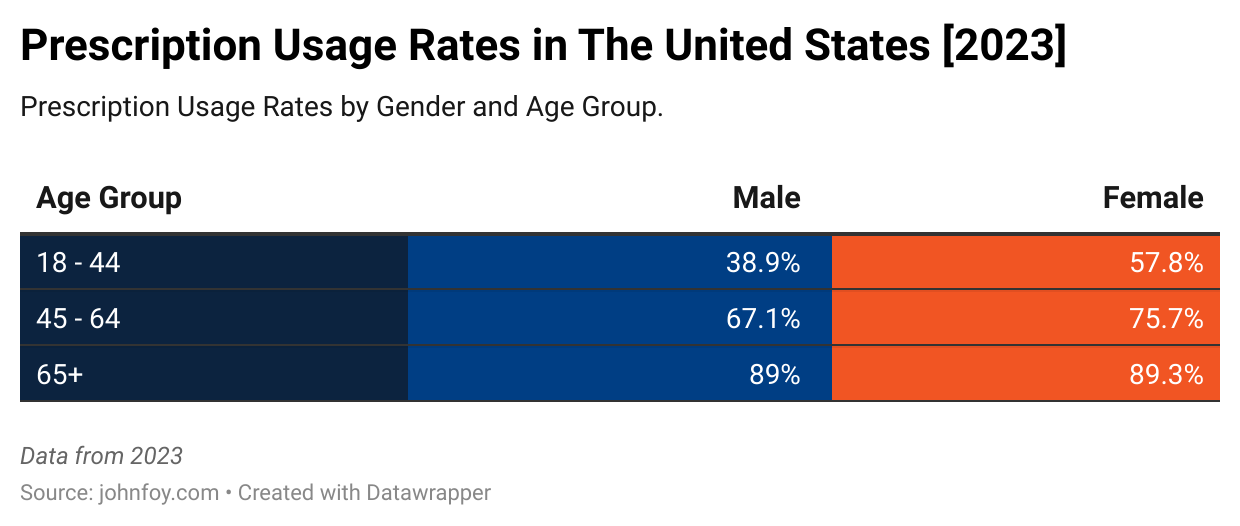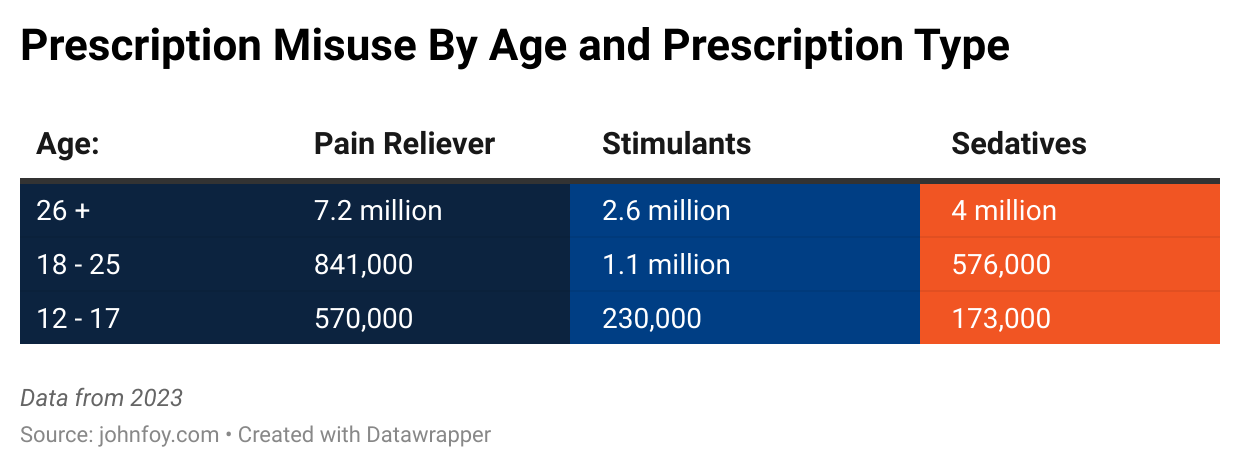Medication is overprescribed in the U.S. We analyze the reasons for this, which drugs top the list, and reveal the consequences
Medication is big business in America: In 2022, 6.1 billion prescriptions were issued. Our analysis shows that 61% of American adults take at least one prescription medication every day, with 27% taking four or more. And while the health of so many millions depends on crucial medicines, many drugs are overprescribed.
Our study reveals that antibiotics and painkillers are the two most overprescribed drugs in America – and the consequences are deadly. Unnecessary drug prescriptions are a prominent factor in over 100,000 deaths in the U.S. every year – the fourth leading cause of death in the country.
But how did drug prescriptions in America become such an enormous national issue? Our analysis reveals the various causes and hidden dangers of overprescription.
The Most Overprescribed Drugs in America Today
Our study shows that antibiotics top the list of drugs most overprescribed in the U.S. In 2022, U.S. healthcare providers issued 236.4 million antibiotic prescriptions.
This works out at 7 prescriptions per 10 people in an outpatient (non-hospital) medical setting. In 46% of cases, doctors prescribe antibiotics – which are intended to fight infection – without any infection.
Our findings also reveal that this profligate use of antibiotics can lead to antibiotic resistance, which renders the drugs ineffective, the bacteria no longer responsive to treatment. Additionally, people often fail to take their antibiotic treatment as prescribed, or have the wrong dosage prescribed.
After antibiotics, the country’s most overprescribed drugs are opioids, antidepressants, proton pump inhibitors, and statins. In far too many cases, all of these drugs are prescribed unnecessarily.
Cumulatively, their overprescription represents an enormous health risk to many millions of Americans and can cause serious side effects, addiction, and even death. Indeed, our studies have found that the misuse of opioids is especially dangerous.
Of nearly 108,000 people dead from a drug overdose in 2022, 82,000 (76%) were due to opioids (about 76%). The number of opioid-related deaths has increased substantially since 1999.
Third on the list of overprescribed medicines are antidepressants. Patients overprescribed psychiatric medicine can suffer some acute long-term consequences. As our analysis unearthed, such drugs can permanently change thoughts, feelings, and behavior.
As such, a patient who has taken such medication over a long period may become decontextualized, passive, and incapable of understanding or changing their mental health. In short, their reliance on antidepressants becomes a negative, and they are effectively unrecoverable.
Another factor our study pinpoints is the dangers of polypharmacy. For people using different medications, for example, older patients are more likely to simultaneously take numerous different drugs, so overprescription presents multiple risks.
The combined use of many medications demands diligent care since the risk of side effects such as cognitive impairment and falls due to disorientation and incompatible drug interactions is high. Ultimately, failing to get the balance right can lead to serious repercussions.
The Factors that Determine America’s Medical Overprescriptions
Three prominent factors drive America’s overprescription crisis. Firstly, patients have become over-reliant on medicine as a simple and convenient solution to health issues.
Our study shows that this factor is compounded by the second: that appointment times are often limited, which means doctors can’t offer a detailed assessment, and thus instead quickly issue a prescription. There’s also the power and pervasiveness of a vast pharmaceutical marketing machine that has not only normalized but incentivized the use of medicines.


For teens reliant on regular medicine, there’s high potential for serious repercussions, with many prescriptions effectively representing “gateway drugs” to further misuse, addiction, and grave health consequences.
Our study shows that 14.4 million Americans aged 12 and over have misused their prescriptions, including 8.6 million who misused painkillers. Due to the availability of prescription medicines in our homes, teens have easy access to numerous different types of drugs.
In fact, 53% got the last drug they used from a friend or relative. This kind of easy exposure to opioids such as codeine, tramadol, fentanyl, and morphine can create serious immediate teen health issues. It can also lead to addiction to other, stronger drugs with even harsher health consequences.
At John Foy, we can see easy wins in the fight against overprescribing medications. Our analysis helped us to formulate some useful measures.
For example, people should finish a course of treatment and make sure nobody else uses their antibiotic medication. They should be more transparent when it comes to letting healthcare professionals know exactly what they’re taking.
On the flipside, healthcare professionals need to let patients know as much about a prescribed medication as they can to offset instances of misuse and horrible side effects.
With such small, simple steps, we can make America’s overprescription crisis more manageable and improve our national health.
